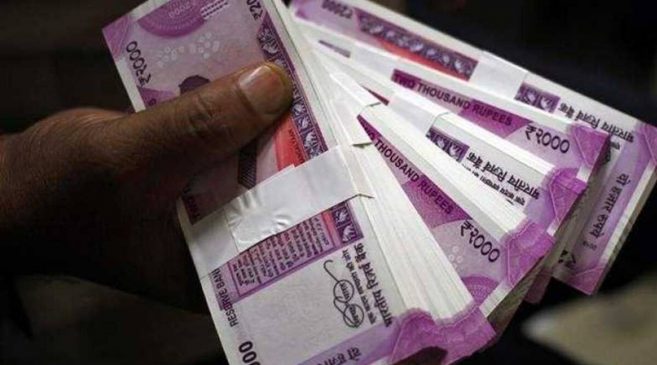High-value cash deposits will pop up in your Form 26AS & Annual Information Statement.
While the Reserve Bank of India has not put a cap on the number of Rs 2,000 notes that one can deposit in bank accounts, tax experts say one should be aware of the Statement of Financial Transaction (SFT) rules.
High-value cash deposits are reported by banks to the income tax department as per the SFT rules. This is also reflected in the depositor’s 26AS and Annual Information Statement. The threshold for reporting of cash deposits by a bank or the Post Master General is Rs 10 lakh in accounts other than the current account in a financial year and Rs 50 lakh in one or more current accounts in a financial year.
Read More: Make UPI Payment without UPI PIN and even when the bank server is down. Check new MobiKwik feature
Handy documents
Individuals must ensure that they have a filled-out cash deposit slip with the bank details, including the account number, name, and any other required information. This slip is typically available at the bank’s counter or online banking portal. Under income tax laws, if you are depositing a sum above Rs 50,000, you are required to quote your Permanent Account Number (PAN). Make sure you carry your PAN card for verification purposes.
Some banks may ask you to mention the source of your income on the deposit slip. Prepare this information in advance. If you are sending someone on your behalf to deposit the cash in your account, the person should carry identification proof. In case your PAN card is not linked with your Aadhaar card, it would be prudent to carry your Aadhaar card as well. Remember to check with your bank for any additional requirements or procedures they may have put in place, including any limit of deposit.
Income tax notice
The chances of receiving an income tax notice for depositing money in the bank depend on various factors. Depositing large sums of money, including Rs 2,000 notes, is allowed as long as the source of income can be substantiated. If you have to deposit a sizeable number of notes, it would be more practical to deposit it in the bank account rather than exchanging it. For exchange of Rs 2000 notes at bank branches, there is a daily limit of only 10 notes per day, totalling up to Rs 20,000.
The I-T department reconciles the data on deposits with the information it has on record like income tax return. If the deposit matches the details it has, the individual may not receive any income tax notice. Neeraj Agarwala, partner, Nangia Andersen India, says in the event that one receives an income tax notice, the onus is on the taxpayer to establish the source of income along with providing documentary evidence. “It is crucial to have proper documentation and evidence to support the source of your income and the source of the deposited funds,” he says.
Read More: Rs 2,000 Note Exchange Or Deposit: Before Going To Bank, Know These Key Things
Banks are required to report suspicious account transactions such as a sudden steep rise of cash deposits and this may apply at the time of exchanging notes of Rs 2,000 as well.
Sandeep Sehgal, partner- Tax, AKM Global, a tax and consulting firm, says the nature and source of income have to be maintained while depositing/ exchanging notes in the bank, since unexplained or undisclosed income might attract an income-tax notice and be subject to tax penalty as well along with the cost and consequences of Prevention of Money Laundering Act, 2002. “Taxpayers should do an exercise to reconcile the income vis-a-vis the quantity and amount of notes deposited to have a justification ready in case it is asked by the tax authorities,” he says.
So, if you receive an I-T notice, it is best to seek help from a tax consultant or chartered accountant.



































